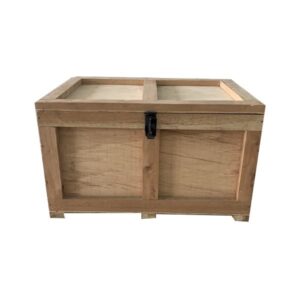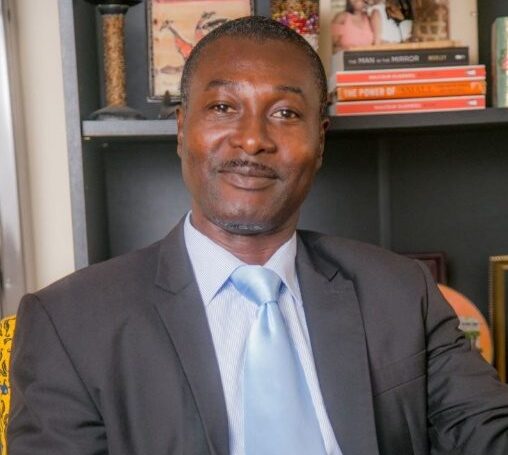There are fond memories of our days in boarding school. At least, mine. As re-opening approached, our parents would work their usual magic and fish out money for provisions. They would ask for a list of things we needed for school and they knew so well how to trim the list. There were many essentials; well, we would think they were essentials, our parents would think otherwise.
After a few terms of list-shortening experiences, we learned to inflate. Shoot for the stars and you might land on the moon, at least. One packet of cabin biscuits which we had to split among siblings was increased to three packets each. We hoped and prayed that even if we missed the ‘stars’, we would perhaps be granted a cool landing on the ‘moon’- our disguised and intended one packet. Likewise, four cans of ‘tinapa’ mackerels became ten cans. Six cans of Titus sardines (with keys- those long, slender pieces of metal that were critical for opening the sardine tins) became twelve cans and six cans of Ideal milk moved up to at least ten cans.

Unfortunately, it hardly ever worked. Our parents saw through it all and they applied their ‘slashers’ with even more vim and left us hapless. Yet still it did not dim our eagerness to go back to school and share the new ‘tooli’- made-up stories spiced with enough incredulity to get the attention of even the most uninterested school-mate. We looked forward to the trip to the school from home, to the boarding houses, school assemblies and classrooms festively because there were too many friends we had not seen nor heard from (no cellphones, no social media then. Remember?) and we wanted to see and hear what they had been up to.

The Chop-Box
We had chop-boxes, freshly scrubbed and inscribed boldly with our names and duly locked with the most sophisticated padlocks. Our chop-boxes were extremely essential to our being. Everyone had one. In the same way, every chop-box had gari. Gari was stable for a boarder. Whether a chop-box had one margarine can-full of gari, one ‘olonka’ or several, there almost definitely was gari in every chop-box.
The stable had an almost spiritual significance in the year of the famine- 1983. Many farms had been burnt and destroyed by raging and uncontrolled bushfires. Food became scarce. Cassava, from which gari is derived, was not spared.
Gari has an inherent quality, a saving grace during that famine period. It swells when water is poured onto it prior to consumption. A small cupful could easily double in volume and feed a handful of students grouped around it with eager spoons or fingers. It is this swelling that brings so much value to gari. Buy one olonka-full, get one olonka-full for free through swelling.
Gari and the Point of Investment

Here is my point on investment. The money we set aside for tomorrow is like gari. When it is in savings (either under our mattresses or at the bank), it is like gari prior to adding water. No change. There is the potential to ‘rise’ but it still does not. It is still gari, it is still very useful. Almost every chop-box has it, especially at the beginning of the school term.
However, the full potential of gari is seen when water is added. That is like investing our money. With time, we can watch our money swell and look pretty. For instance, the fifty Cedis we invest today could become even more tomorrow and do much more for us. Including working for us while we sleep.
The idea of having money work for us is helpful for several reasons. For one, we can step back and let someone else, to shelf investing with emotions, an expert whose job is to ensure security along with good enough returns for the investment. We may not have the time to forage through documents, tables, opinions and reports to help us decide what investment is suitable for our needs. We may simply not have the knowledge and expertise to select investment assets our money can buy. Our money could serve as additional income.
Imagine being paid income from our own investment every now and then. Also, when money is left un-invested, it is exposed to loss of value because of inflation. The real value of our money or our purchasing power reduces and we only should have just a portion of our money as pure savings. The mere reason is that most investments may not be quickly converted to cash when we need cash for an emergency situation. Additionally, the potential return could, in some cases, be amazing, as could be the case with investing in some equities.
From Peanuts to Fortune
Many years ago, when we learned in physics about elasticity, one important fact was the limit of elasticity. We stretch Wrigley’s PK chewing gum and it tears at a point. A local dish, okro soup, when scooped, leaves a ‘telephone line’ but that too fails and splits (hopefully not onto our dress). We stretch rubber bands to their elastic limit and any further force would cause the band to tear. Likewise, gari has a limit to how much it would swell. We used to sing Charlotte Elliot’s hymn, “Watch and pray” thinking about this attribute of gari, back then. Unfortunately, even gari has an ‘elastic limit’. Investing does not, per se.
There is, given time, no limit to what our investments can grow to become. Barring investments that can give negative returns during bad periods, we can watch our investments grow continuously with time. What started as ‘peanuts’ could grow to become a fortune at a later date.
How can we ensure that, when we invest, we can watch it grow continuously instead of getting to a limit and failing? First, it is important we start with money that is really meant for investment. Investing should be purposeful, a calculated move with a desired outcome in mind. Therefore, it would usually require time and patience. There is really no need investing tomorrow’s ‘chop-money’ with the view to making some quick return and getting back what was invested. One risks a very angry spouse. Money that is invested should therefore be money that we can leave invested for a while, at least a year or beyond. The longer we invest; the more work we allow the money to do for us.
Sometimes, we think what we have is inadequate and it is better to wait till it becomes sizeable. While this may suit some forms of investment, there are yet still some investment vehicles that encourage small amounts which one can accumulate while it is invested over a period of time. One such form of investment is the mutual fund or a collective investment scheme. It allows us to start in a small way and build up with regular additions. It has been shown to yield better returns than waiting to invest a sum lumped through savings. Really, there is no need to wait to invest. We can take a look at what we have and use it to start. Then every now and then, could be weekly, fortnightly or monthly. Insofar as we keep at it, we can watch the investment grow.
Investing is not for everyone but investing IS for everyone. It is. As long as we are determined to build wealth, there are many avenues worth exploring. We first ensure we earn enough to be able to set aside a little as an investment. Alongside, we critically assess our expenses and try to eliminate what we can do without which is not very helpful. Let us try to steer away from personal loans for consumer goods which may only increase our monthly expenses, unless the goods are used in some form of income-generating enterprise. That way, we free up money for investment (not for spending!).
Once we have been able to free up a small portion of money each week or monthly, we can begin our journey towards making our money work for us in a way that surpasses the wonders of gari. We can speak with our investment advisor to find out more about what our options are and take the right step. The longer we wait, accumulating our money in savings, the more we lose (opportunities to invest, purchasing power due to inflation).
Let’s all look to doing something in 2022. The year is still a young one. New beginnings, fresh opportunities!

About the Writer
He was recently the resource person of Metro TV’s business show Bottomline, where he shared thoughts on Goal Setting for 2022 from the perspective of financial planning. Through his writings Kwadwo has discovered his love and knack to simplify complex theories spicing them with everyday life experiences for the benefit of all. Kwadwo Acheampong, as Head of OctaneDC Research, has over years garnered experience in fund management and administration, portfolio management, management consulting, operations management and process improvement. Feel free to send him your feedback on his article. Kwadwo at [email protected] or call him on +233 244 563 530










